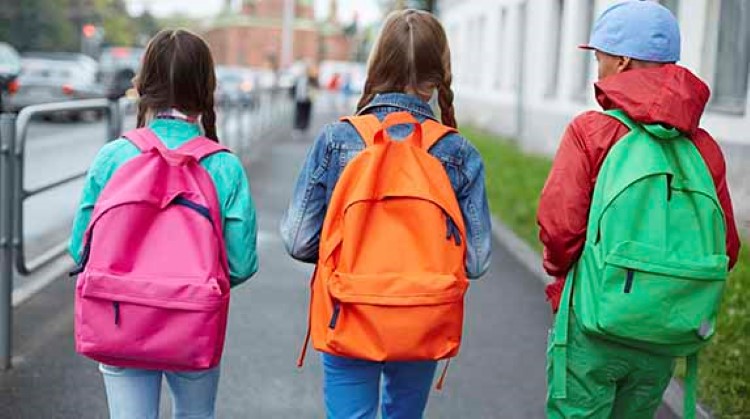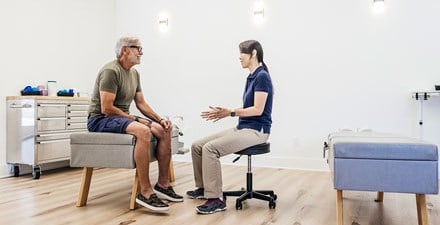
Backpacks are boss when it comes to carrying school supplies and books. They're also a go-to for commuters and helpful for day trips. However, improper use can lead to postural problems and even pain.
Children — and adults — should follow these simple tips, provided by physical therapists, when wearing a backpack.
1. Wear both straps.
Wearing just one shoulder strap puts all the weight of the backpack on one side of the body. By wearing both straps, the weight of the backpack is spread across the upper body more evenly. Adding or using the backpack's front clip to keep the straps on your shoulders is an even better choice!
2. Wear the backpack over the strongest mid-back muscles.
Pay close attention to the way the backpack is positioned on the back. It should rest evenly in the middle of the back and not hang lower than 4 inches below the waist. Shoulder straps should not be too loose but allow the child to put on and take off the backpack easily. Your backpack's position on your back should allow free movement of the arms.
3. Lighten the load.
Keep the backpack's load at 10% or less of the child's weight. For example:
- A loaded backpack for a child weighing 50 pounds (the average weight of first graders) should weigh 5 pounds or less.
- A 70-pound child (average weight for third grade) should only carry a backpack weighing 7 pounds.
- A 110-pound child (average weight for a seventh grader) should try to carry 11 pounds or less.
Consider having the child carry only those items required for the school day. You may wish to consider a backpack on wheels rather than one you wear if the backpack's contents weigh more than 15% of the child's body weight. When packing the backpack, place the heaviest items closest to the child's back.
When choosing a backpack for your child, consider its overall size and look for:
- Padded straps, which protect the nerves and skin around the neck and arms.
- A waist strap or strap belt, which helps to keep the backpack against the back and close to the body, promotes better posture when wearing it.
Backpacks come in many sizes to fit many bodies. An adult-size backpack will be too long and may be too heavy for a child's body, preventing these tips from helping!
How a Physical Therapist Can Help
Children come in all shapes and sizes, and some have physical limitations that require special adaptations. A physical therapist can help you choose a proper backpack and fit it specifically to your child.
Physical therapists can help improve posture, correct muscle imbalances, and treat pain that may result from improper backpack use. Physical therapists also can design personalized fitness programs to help children get strong and stay strong — and carry their own loads.
Physical therapists are movement experts who improve quality of life through hands-on care, patient education, and prescribed movement. You can contact a physical therapist directly for an evaluation. To locate a physical therapist in your area, visit Find a PT.
The APTA Academy of Pediatric Physical Therapy contributed to this consumer resource. It is for informational purposes only and is not intended to represent the position of APTA Pediatrics.


